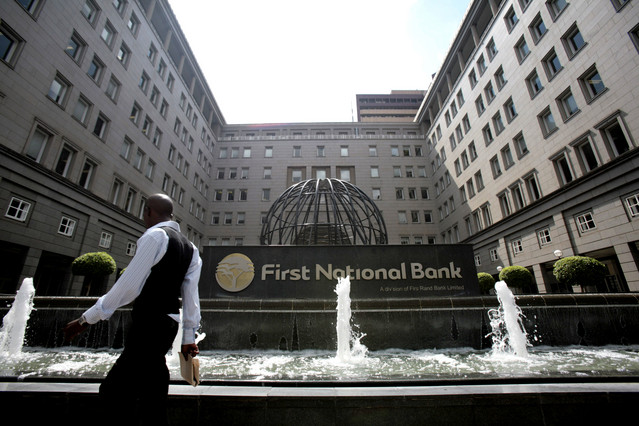BUCKING the trend of the country’s subdued economy, South Africa’s banks have again posted solid earnings, as they continue to strengthen their position through improved risk management practices and robust capital adequacy levels.
Early October saw credit ratings agency Moody’s revise its outlook for the country’s banking system from negative to stable for the coming 12 to 18 months, signalling a more positive forecast for the industry.
South Africa’s banking system had maintained a high level of return on equity, Nondas Nicolaides, a vice-president and senior credit officer with Moody’s, told media in October, while its Tier 1 capital ratio of 11.6 percent as of June provided a sufficient buffer against any increased credit losses or further economic headwinds.
Nicolaides noted an expected rise in non-performing loans (NPLs), which he said stemmed from continued subdued growth in the economy and higher interest rates, but added that banks’ ‘resilient core earnings and ample capital buffers would enable them to manage asset quality deterioration.’
NPLs are forecast to rise from 3.3 percent of gross loans as of June 2015 to 3.5-4 percent in 2015-16, the ratings agency said.
Mike Brown, CEO of Nedbank, told Oxford Business Group (OBG) that South Africa’s banking sector was well positioned to overcome economic and regulatory headwinds and take advantage of opportunities as they present themselves, even with a possible rise in NPLs.
‘If you look at coverage levels against NPLs, they are at all-time highs,’ he told OBG. ‘Capital levels in the banks are also at records levels, so banks enter this cycle with loan books in good shape and provisions high.’
Although growth in some segments of the economy, such as small and medium-sized enterprises, has been more affected than others by issues with electricity supply, opportunities in the infrastructure and renewable energy sectors persist, which should result in solid growth in banks’ wholesale books, Brown added.
South Africa banks could also see a lift from cross-border lending if the US dollar continues its upward movement against currencies in the region, according to Jared Coetzer, who works on institutional sales for pan-African equities at South Africa-based investment banking group African Alliance. Regional banks could look to borrow from South African lenders rather than raise further dollar-denominated debt in order to keep down credit costs, Coetzer told media in October.
With the IMF forecasting record economic growth of 4.5 percent across sub-Saharan Africa this year, significantly higher than the 2 percent projected for South Africa, the country’s banks could also find themselves eyeing more lucrative markets farther afield.
‘South African banks have proven they can generate earnings in both stronger and weaker macroeconomic environments,’ Nedbank’s Brown said. ‘While domestic growth is likely to be sluggish, the rest of Africa is expanding rapidly but is also more volatile, so it’s a question of how to appropriately deploy capital to the rest of the region.’
Standard Bank currently operates in 20 African countries and is expected to expand into West Africa in the coming years, while FirstRand has full-service banking operations in eight African countries, investment banking in one (Nigeria), representative offices in two (Kenya and Angola) and recently gained a licence to operate in Ghana.
For its part, Nedbank has full offices in six African countries: South Africa, Namibia, Swaziland, Lesotho, Zimbabwe and Malawi, as well as representative offices in Kenya and Angola. The bank is also present in Mozambique, with a 36.4 percent stake in Banco Unico, and is exploring expansion into Botswana, Zambia, and West and Central Africa through a 20 percent stake in Ecobank, acquired last year.
Barclays Africa Group, which was formed through a 2013 merger of Absa with the UK-based bank’s Africa operations, is present in 15 countries on the continent, and plans to open full banking operations in Nigeria next year.
Overall credit levels rose marginally in the second quarter of 2015, according to figures released by the National Credit Regulator in late September.
Total outstanding consumer credit increased by 0.9 percent in the April-to-June term, up 3.6 percent year-on-year, to R1.63trn ($123bn), the report said, with mortgages accounting for around half of the quarterly increase.
The report’s findings indicate that lenders are taking a more conservative approach towards extending credit, with easing in the growth rate of unsecured loans and a higher rejection rate for credit applications. While there was a 16.8 percent increase in the number of loan applications over the period, 56 percent of requests were turned down.
Although the number of consumers with impaired credit records rose by 124,000, or 1.1 percent, to 10.53 million over the quarter, the number of impaired accounts fell by 670,000 to 21.7m out of a total of 82.2 million, marking another step in efforts to bolster risk management and ring-fence NPLs.




























